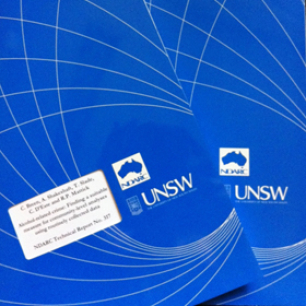NDARC Technical Report No. 161 (2003)
EXECUTIVE SUMMARY
Introduction: In recent years cocaine use has become prevalent among heroin users in NSW. This is a cause for concern, as research suggests that the associated harms of cocaine use are over and above those generated by heroin use alone. Despite this, the impact of concurrent heroin and cocaine use on existing heroin users in NSW is yet to be thoroughly investigated. Moreover, the effect of this pattern of drug use on treatment outcome for heroin dependence has yet to be examined in an Australian context.
The current study was conducted as part of the Australian Treatment Outcome Study (ATOS). ATOS is the first large scale longitudinal study of treatment outcome for heroin dependence to be conducted in Australia. The aims of the current study were: to determine the prevalence of cocaine use among individuals presenting for treatment for heroin dependence across the Sydney region; to compare the clinical profile of heroin users who also use cocaine to that of those who do not.
Results
Prevalence
Cocaine use was common amongst the ATOS sample with 91% having a lifetime history of cocaine use and 40% reporting cocaine use in the month preceding interview (CU). A quarter of CU had used cocaine more than once per day in the past month.
Social functioning
CU presented for treatment as a more dysfunctional group. They were more likely to report being homelessness, unemployed and involved in criminal activity in the past month than were non-cocaine users (NCU).
Drug use
While the drug use histories of CU and NCU did not differ, their recent drug use patterns indicated CU to be more heavily entrenched in the drug scene. CU reported higher levels of current heroin use and dependence, as well as more extensive recent polydrug use.
Risk-taking
CU emerged as a particularly ‘at risk’ group. They were more likely to report both borrowing and lending needles in the month prior to interview than NCU, placing them at a particularly high risk of contracting and spreading blood-borne viruses. CU were also more likely to report having experienced a heroin overdose in the past month.
Physical and mental health
Poor physical and mental health was found throughout the sample. Three quarters of the sample has experienced an injection-related health problem in the last month and the mean SF-12 physical health score of ATOS participants was below average. Comorbid psychological conditions were common and high levels of psychological distress likewise. CU and NCU did not differ in relation to mental or physical health.
Conclusion: Cocaine use is common among heroin users in NSW. CU have a different clinical profile to NCU and appear to be a more ‘at risk’ group, displaying greater psychosocial dysfunction and higher levels of heroin use and dependence. It is currently unknown what effect these differences will have on treatment outcome. These baseline findings will be taken into account when assessing the 3 and 12-month follow-up data.
Citation: Williamson, A., Darke, S., Ross, J. and Teesson, M. (2003) Cocaine use among the ATOS NSW sample: Prevalence and related harms, Sydney: National Drug and Alcohol Research Centre.


